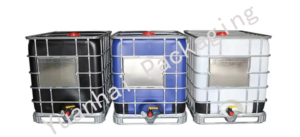IBC market development needs:
IBC tote can also be used for petroleum products storage; the field accounted for 15%. IBC tote can be used in the food field, but for the higher requirements of the product, the current application demand is less, accounting for about 2%.
IBC tote can hold Class II and III hazardous materials. There are two main sizes of IBC tote in the current market: 1000L and 1200L.IBC totes are the mainstream liquid packaging containers in the world due to the advantages of corrosion resistance, creep resistance, high space utilization, ease of use, etc. They are mainly used in packaging pharmaceuticals, chemicals, paints, and other products.
In terms of production, due to the IBC tote industry being more profitable and attracting many enterprises, the current market, with a more significant number of enterprises and more intense competition, is becoming more intense. In the short term, IBC tote manufacturers and production will continue to show a growth trend; in the long term, as supply and demand tend to balance, the more intense competition, part of the small-scale production enterprises’ living space is compressed, and gradually withdrawn from the market.
IBC tote product advantages
1. The special screw-fastened steel rod enables easy and quick replacement of the inner packaging.
2. The inner container adopts HDPE blow molding, anti-ultraviolet, anti-aging, and easy to clean.
3. The outer frame is made of hot-dip galvanized steel pipe welded into shape, and the bottom tray is fixed by non-slip screws (grade 8.8), which are solid and sturdy.
4. The product marking board outside the frame can be labeled with the company name, products, and other approvals that need to be labeled so that customers can fully understand your company’s information.
5. The bottom pallet is made of steel plate casting and is four-way into the fork type. Enhance the stability and facilitate loading, unloading, and stacking.
6. There is a volume scale cast on the inner liner so that the user can make use of the transparent characteristics of the container to see the height of the liquid level inside the container.




